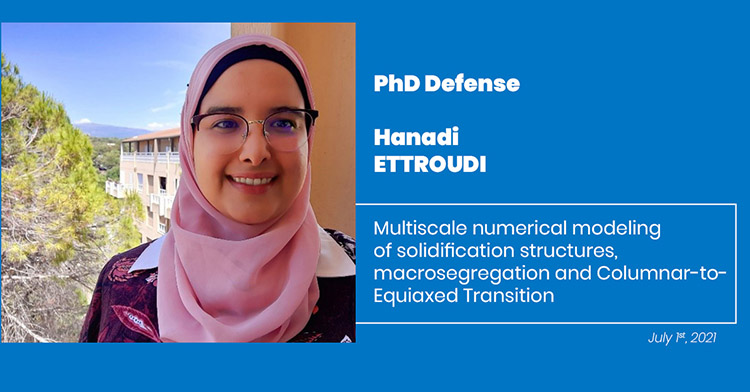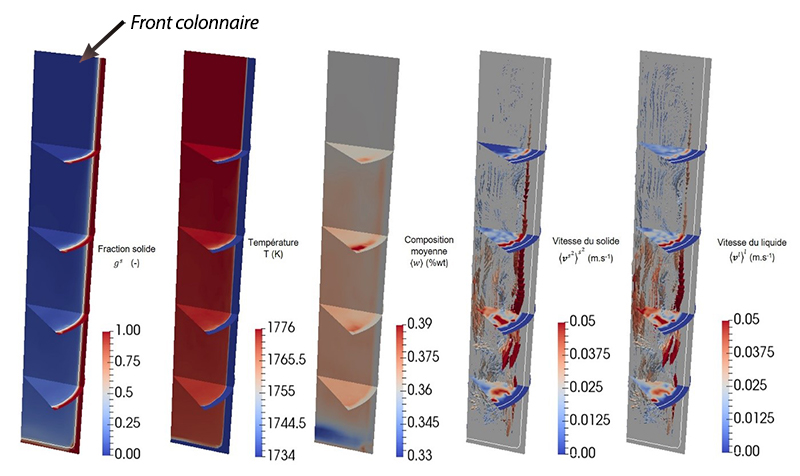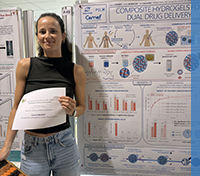PhD defence of Hanadi Ettroudi
1 July 2021
Hanadi Ettroudi defends her PhD in Numerical Mechanics and Materials on July 1st, 21
Multiscale numerical modeling of solidification structures, macrosegregation and Columnar-to-Equiaxed Transition

Hanadi Ettroudi conducted her PhD work in the 2MS team under the supervision of Charles-André Gandin and Gildas Guillemot at CEMEF and of Hervé Combarieu, MINES Nancy in the framework of the national FUI project "Soft Defis". She defends her PhD in Numerical Mechanics and Materials on July 1st, 2021 in fornt of the following jury:
– Denis NAJJAR, Professeur des Universités, Centrale Lille
– Kader ZAIDAT, Maître de conférences, Institut Polytechnique de Grenoble – PHELMA
– Lounès TADRIST, Directeur de recherche CNRS, Aix-Marseille Université – Institut Universitaire des Systèmes Thermiques Industriels
– Marie BEDEL, Maître de conférences, Arts et métiers Paris-Tech
– Miha ZALOŽNIK, Chargé de recherche CNRS, Université de Lorraine-Institut Jean Lamour
– Marvin GENNESSON, Ingénieur R&D, Centre de recherche CREAS
Abstract:
As part of the French SOFT-DEFIS project, this work aims to contribute to the development of a numerical tool predicting the formation of equiaxed and columnar solidification structures, as well as the transition zone and associated chemical segregations during large steel ingots casting. Until now, models generally use the finite volume method. A first model based on the finite element method has been proposed but limited to equiaxed solidification. The latter is extended to model both columnar and equiaxed structures. A Level-Set method is applied in order to follow the growth of the columnar front. Its velocity is calculated using a growth kinetics model developed for dendritic microstructures. Equiaxed grains develop in the undercooled liquid ahead of the columnar front and can be transported. Two sources of equiaxed grains are modeled : heterogeneous germination as well as fragmentation. The model considers the dendritic morphology for the two microstructures. A solutal blocking criterion is used to predict the position of the columnar-to-equiaxed transition. The conservation equations are solved using a splitting method separating the two stages of transport and growth. 2D and 3D simulations of small ingots serve as test for the different parts of the model. Finally, the model is applied at the scale of industrial ingots to predict the evolution of developed structures and segregated zones, in comparison with the
experimental analyses of the project partners.
Keywords: Solidification, Modeling, Columnar-to-Equiaxed Transition, Finite Elements, Macrosegregation, Multiscale, Fragmentation, Ingots









